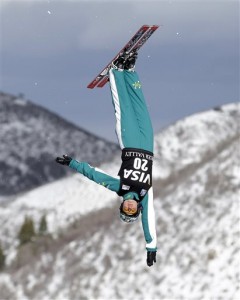
The legacy of the 2002 Olympic torch still shines across the Beehive State as the economic impacts of the Olympic games continue today.
The Olympic facilities used during the 2002 Winter Games have provided a home to many Olympic trials this year and have come to be known as the “mini-Olympics,” according to Jeff Robbins, CEO of the Utah Sports Commission.
“If you count all the 13 events or major activities that have been held since September, the economic impact is estimated to be about $30 million,” Robbins said. “That is a significant impact in three and a half months.”
The state’s official estimate of the 2002 Games’ economic impact was $4.8 billion in sales, 35,000 job years of employment and $1.5 billion in earnings for Utah workers, according to the Salt Lake Chamber.
And the earnings continue to grow.
Since then, Utah has hosted more than 550 events at the Olympic venues, which have generated approximately $1.5 billion for the Utah economy, according to Robbins.
Robbins said there has been an additional $300 million, approximately, in media value gained by the state since the 2002 games. He said the signs along the bobsled run, the ski jump and in the ice rink all helped advertise Utah to the world.
He said the trials and other events have drawn people from all over the country to Utah. Robbins estimates more than 300 media personnel, including an NBC crew, and 100 athletes came to Utah for the trials, and that’s excluding all the officials and the friends and families of athletes.
According to Sandy Chio, marketing director for the Utah Olympic Legacy Foundation, the 2014 Olympic Trials for the Nordic combined and ski jumping events were held in the Olympic Park in Park City and drew more than 10,000 spectators. An additional 20,000 attended the trials for speedskating in the Olympic Oval.
That’s a total of 30,000 people, and Chio said she estimates that approximately 7,000 were from out-of-state.
The Olympic venues are more than just a tourist destination. The facilities bring in crowds of winter-sports fans, including students who may not get to experience the real games.
“After seeing these trials, I’m excited to see the U.S. compete in Sochi,” said Jon Kjar, a BYU student and local skier, who attended the trials. “We are going to come away with a ton of gold medals.”
For Kjar, and all those who go see the trials, the Olympic venues still stand as a place that can handle all levels of competition.
Utah’s Olympic Legacy Venues have hosted events like the Winter X-Games, World Cup Speed Skating, Bobsled and Skeleton World Cup, Luge World Cup and the recent Olympic Trials.
“The (2002) games helped provide awareness to an audience nationally and internationally,” CEO Robbins said. “(They) understand the quality that we have here, the better infrastructure.”
He said few other Olympic-hosting cities have been able to do as well as Salt Lake City. He hopes this recent success with the Olympic Trials will help Utah in securing more Winter Games events in the future.




